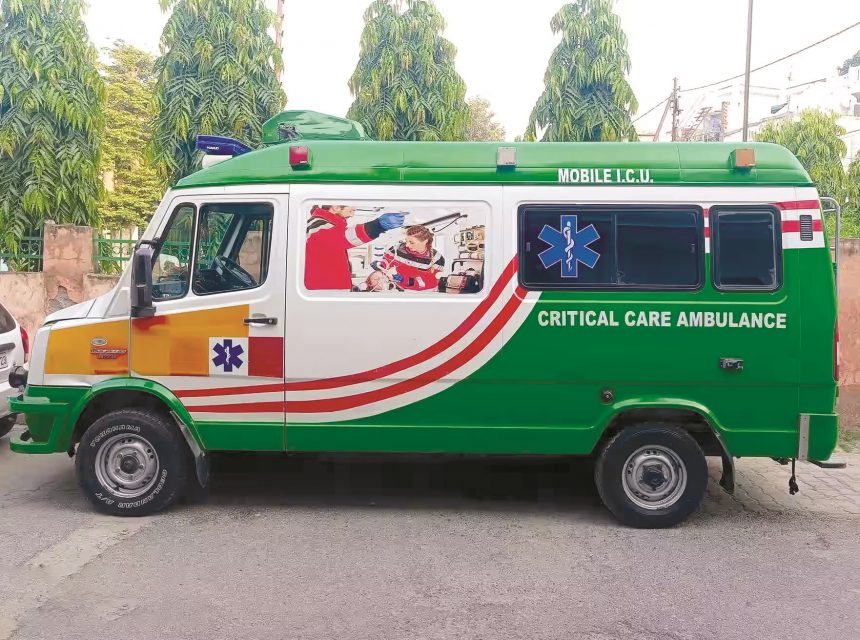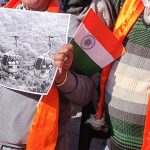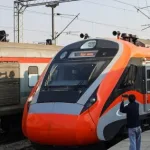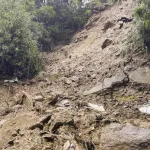Srinagar, Dec 24: The ambulance service in Jammu and Kashmir (J&K) is in dire need of an overhaul, grappling with a shortage of critical care ambulances and a disorganized emergency response system. Despite the Union Territory’s alarming road accident rate, the existing infrastructure falls short in addressing the urgent medical needs of accident victims, particularly in remote areas.
A senior critical care expert from the Health Department in Kashmir, who has worked extensively in emergency services, highlighted the shortage of critical care ambulances and stressed the urgent need to bolster the fleet for better patient care.
“There is a pressing need to deploy ambulances along vital highways where fatal road accidents are common, ensuring that patients are transported to hospitals within the golden hour,” the expert said.
“Critical ambulances should remain alert on major highways like Baramulla-Srinagar, Srinagar-Anantnag (south Kashmir) highway, Srinagar-Bandipora, Srinagar-Leh highway as road accidents mostly take place on highways,” he said. He said an effective emergency care system like timely availability of ambulances can save patients’ and reduce critical injuries.
In rural areas, the challenge is even more pronounced, with ambulances often taking long hours to reach accident sites due to difficult terrain. “In normal ambulances, there are no trained technicians who can provide pre-hospital care,” he added.
Although ALS ambulances are equipped with Emergency Medical Technicians, their numbers are limited, and they are often occupied with patients.
“I’ve seen critical care patients on ambu bags instead of ventilators due to lack of confidence among technicians; trained professionals are needed on these ambulances,” he said.
He also recommended regular maintenance of critical care ambulances by the Motor Vehicles Department, pointing out that faulty ventilators and other equipment often jeopardize patient care. “The equipment often malfunctions, putting patients’ lives at grave risk,” he warned.
Interestingly, most private hospitals in Srinagar, despite operating high-risk patients, do not have their own critical care ambulances. “All private hospitals in Jammu and Kashmir should be mandated to have critical care ambulances, and the government should introduce a policy to ensure this,” the expert stressed. He noted that many patients are transferred to government hospitals in normal ambulances, which is extremely risky.
Public health experts also raised concerns that major hospitals like SKIMS, SMHS, LD, and Bone and Joints Hospital lack sufficient critical care ambulances. “These hospitals should have enough critical care ambulances, but unfortunately, they are not in place,” a public health expert said.
An official involved with the government ambulance service shared insights into the delay in reaching hospitals, particularly in rural areas. “For example, if an ambulance picks up a patient from Rajouri, it takes around eight hours to reach Jammu, with medical treatment provided along the way. These ambulances need to be increased to meet the growing demand,” the official said.
According to recent data from the Ministry of Health and Family Welfare, Jammu and Kashmir operates 489 ambulances under the National Health Mission (NHM), including 139 ALS, 64 Basic Life Support (BLS), and 286 others. Additionally, 611 other ambulances are operational outside the NHM.
In response to the concerns, Sajid Amin, Nodal Officer, State Health Transport Organization (SHTO) Kashmir said the government has brought 44 ALS ambulances and these would be induced soon. “Last year the government also brought 34 ALS ambulances. This is a regular phenomenon,” he said.
“We have trained emergency medical technicians for every ALS ambulance. These ambulances are maintained properly and the mechanical check-up is done,” he said.
Currently, only ALS and BLS ambulances in Jammu and Kashmir are equipped with GPS. However, the government plans to install GPS in all ambulances.
The Nodal Officer added that this time, ambulance distribution has been carefully planned to ensure proper handling of trauma cases on the highways.
Every year, deaths happen on the highways caused due to accidents which people say can be significantly brought down with a robust emergency system, which is not up to the mark.
There are three categories of trauma hospitals: level-1, level-2 and level-3. SKIMS Srinagar, SMHS and Super Specialty hospitals come under level-1 category. The trauma centres established in peripheries fall in level-3 hospitals and are meant for minor critical services. Most trauma cases require referral to Srinagar hospitals, necessitating critical care support through specialized ambulances.








